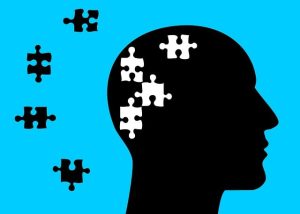Play therapy is a unique, child-centred approach using play and games to address emotional, behavioural, and developmental challenges in children. Through safe, fun environments, therapists utilise toys and imaginative scenarios to observe and interpret a child's play, enhancing mental health by aiding trauma processing, conflict resolution, coping strategy development, social skill enhancement, and building self-esteem. This method offers a natural and engaging way to support children's psychotherapy needs, fostering emotional intelligence, resilience, and overall well-being while laying the groundwork for better adult mental health. Parents and caregivers play a crucial role in this process by creating safe spaces, setting dedicated playtime, and actively engaging with their child's therapy journey.
Play therapy is a powerful tool for enhancing children’s mental health, offering a unique and natural approach to healing. This article explores the benefits of play as a therapeutic method, delving into its ability to support children’s emotional well-being. We’ll uncover the role of psychotherapy within play sessions, providing insights into techniques that foster growth. From creating safe spaces to implementing practical tips for parents, this guide highlights the significance of play therapy in promoting mental health and guiding young minds towards resilience.
Understanding Play Therapy: A Child-Centred Approach

Play therapy is a unique form of psychotherapy that utilizes play and games to help children express themselves, communicate, and process emotions. Unlike traditional adult-focused therapy sessions, this approach recognizes that children often understand and cope with their experiences through play. By creating a safe, fun environment, therapists enable children to explore their thoughts and feelings in a natural way. This method is particularly beneficial for those facing emotional, behavioural, or developmental challenges, helping them improve their mental health and well-being.
In this child-centred approach, toys, imaginative scenarios, and open-ended questions become powerful tools. Therapists observe and interpret a child’s play, identifying potential issues and providing guidance. Through play therapy, children can work through traumatic events, resolve conflicts, develop coping strategies, enhance social skills, and build self-esteem. It’s a creative process that allows kids to take the lead, making it an engaging and effective way to support their mental health and psychotherapy needs.
Benefits of Play for Children's Mental Health

Play therapy offers a unique and powerful approach to supporting children’s mental health. Through play, kids can express their emotions, work through traumatic experiences, and develop essential coping mechanisms. This form of psychotherapy allows children to communicate their thoughts and feelings in a natural, non-threatening way, often using toys, games, and imaginative scenarios as tools for self-expression. By engaging in play, children can process complex emotions, improve social skills, enhance self-esteem, and build resilience, all of which contribute to their overall mental well-being.
The benefits of play for children’s mental health are far-reaching. It provides a safe space where kids can explore their identities, understand their emotions, and develop strategies to manage stress and anxiety. Play therapy sessions can also foster a sense of trust and security, encouraging children to open up about their struggles and fears. This process not only helps children heal but also equips them with valuable life skills, setting the foundation for improved mental health as they grow older.
The Role of Psychotherapy in Play Therapy Sessions

In play therapy sessions, psychotherapy plays a pivotal role in facilitating healing and growth for children. Through the use of creative and non-verbal means, such as toys, art, and games, therapists help young clients express their emotions, process traumatic experiences, and develop coping strategies. This therapeutic approach recognizes that children often have difficulty verbalizing their feelings and thoughts, making play a powerful tool to access their inner world and improve their mental health psychotherapy.
Psychotherapists skilled in play therapy use techniques like attachment theory, cognitive behavioral therapy (CBT), and narrative therapy to guide sessions. They create a safe and supportive environment where children can engage in imaginative play, allowing them to explore and resolve conflicts, fears, and anxieties. By understanding the symbolism and metaphors inherent in a child’s play, therapists gain valuable insights into their psychological state, enabling them to tailor interventions for optimal mental health psychotherapy benefits.
Creating a Safe and Supportive Environment for Play

Creating a safe, supportive, and imaginative environment is at the heart of play therapy for children. This space should foster exploration, creativity, and emotional expression, free from judgment or criticism. Through carefully designed play areas and engaging activities, therapists help children feel secure enough to delve into their feelings, past experiences, and fantasies, which are key aspects of mental health psychotherapy.
The environment plays a crucial role in encouraging children to open up about their struggles, fears, and hopes. By providing toys, props, and opportunities for imaginative play, therapists allow children to communicate complex emotions through play, making it an accessible language that helps them process experiences and build coping mechanisms. This nurturing atmosphere is essential for building trust between the therapist and the child, ensuring a safe space where mental health can be explored and enhanced.
Techniques and Activities Used in Play Therapy

Play therapy is a unique form of psychotherapy that utilizes play and games to help children express their feelings, process traumatic experiences, and improve their mental health. This approach recognizes that children often communicate and cope with their emotions through play, making it a powerful tool for therapists. Techniques can vary widely depending on the child’s age, needs, and preferences, but they typically include creative arts like drawing, sculpting, and storytelling, as well as dramatic play, building blocks, and outdoor activities.
The activities are carefully designed to foster emotional expression, enhance social skills, and develop coping strategies. For instance, sandplay therapy allows children to create scenes using sand and figurines, helping them explore and resolve complex feelings. Similarly, puppetry and role-playing encourage kids to act out scenarios, providing a safe space to practice new behaviors or process difficult situations. These interactive methods not only engage young clients but also offer insights into their inner world, enabling therapists to tailor interventions for optimal mental health support.
Implementing Play Therapy: Tips for Parents and Caregivers

Implementing Play Therapy: Tips for Parents and Caregivers
Play therapy offers a unique and powerful approach to addressing a child’s mental health and emotional well-being. As parents and caregivers, supporting this process can significantly impact their development. The first step is to create a safe, nurturing environment where the child feels comfortable expressing themselves through play. This might involve setting aside dedicated playtime each day, ensuring the space is inviting and free from distractions, and fostering an atmosphere of acceptance and non-judgment. Encourage open-ended play with toys and activities that stimulate imagination and exploration, allowing children to work through their emotions and experiences in their own time.
Additionally, parents can enhance the benefits of play therapy by actively listening to their child’s stories and imaginative scenarios, reflecting their feelings, and asking open-ended questions to encourage deeper expression. Regularly reviewing progress with a mental health professional can provide valuable insights and ensure the effectiveness of the therapy. By collaborating closely with therapists and implementing these tips, parents and caregivers can effectively contribute to their child’s journey towards better mental health and overall psychotherapy.
